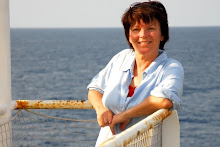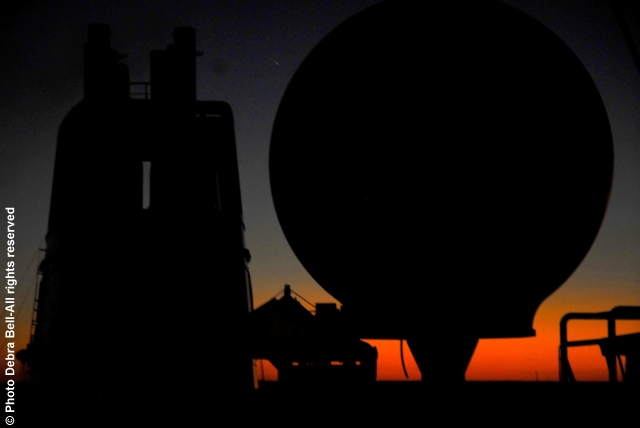Psalm 118: 27
 |
| Sunset after heavy thunder and lightening storms |
 |
| First sunset upon my arrival Sept 21st to Appelsbosch Campus South Africa |
 |
| Sunsets at our Appelsbosch Campus in South Africa |
As we celebrate this special season, the birth of our Lord Jesus Christ, may HIS JOY be with you!
LUKE 2:8-14:
8 And there were shepherds living out in the fields nearby, keeping watch over their flocks at night. 9 An angel of the Lord appeared to them, and the glory of the Lord shone around them, and they were terrified. 10 But the angel said to them, “DO NOT BE AFRAID. I BRING YOU GOOD NEWS THAT WILL CAUSE GREAT JOY FOR ALL THE PEOPLE.”. 11 Today in the town of David A SAVIOR HAS BEEN BORN TO YOU; HE IS THE MESSIAH, THE LORD. 12 This will be a sign to you: You will find a baby wrapped in cloths and lying in a manger.”13 Suddenly, the angle was joined by a vast host of others-armies of heaven-praising God and saying, 14 “Glory to God in highest heaven, and peace on earth to those with whom God is pleased.”
With much thanks and blessings to each and everyone.
Debra
 The Mental Health Program was limited in South Africa, not only in numbers but also in scope since we only had two months to offer training. However, during that time we provided training in five regions and to over 120 church leaders, primarily men since they are being trained as caregivers, from a variety of denominations. In addition, we traveled to Swaziland and Mozambique to connect with church leaders for future training. With only a few exceptions, the program participants were of Zulu heritage, affording us an opportunity to gain better understanding of
The Mental Health Program was limited in South Africa, not only in numbers but also in scope since we only had two months to offer training. However, during that time we provided training in five regions and to over 120 church leaders, primarily men since they are being trained as caregivers, from a variety of denominations. In addition, we traveled to Swaziland and Mozambique to connect with church leaders for future training. With only a few exceptions, the program participants were of Zulu heritage, affording us an opportunity to gain better understanding of  THULI: Of the many amazing experiences of the South African field service there are two that I will never forget. The first is of a woman named Thuli who asked if she could work for me. She told me her husband died one year previously, and she had 6 children. It struck me that this woman in tattered clothes and swollen feet did not ask for money; she asked for work. My desire was to connect her with the church leaders, but she was hesitant. “God doesn’t answer my prayers”, she said softly. I asked for her phone number, and gave her 10 Rand, which is about $1.50. Her face lit up, and she said, “Oh thank you, thank you. Now I can buy bread for my family!” This, too touched me, and I asked if I could hug her. When I did, she sobbed in my arms. At that point I gave her more money for groceries, and asked if I could pray for her. She said, “Please pray for me, and pray for me tonight . . .by name, please pray for me tonight. I just wanted to die. And please have the pastors pray for me. Will you come to my house to bless us?” I told this story to the church leaders, and we followed Thuli’s story for the next two weeks of training. My team and I went to Thuli’s house, and prayed for each family member. What moved us the most was that the love demonstrated among these two sisters and the 3 children at home had more value than much food and many possessions. They truly understood love, but didn’t realize the treasure they have. Thuli asked that I share her story and family picture so that others would also pray for them.
THULI: Of the many amazing experiences of the South African field service there are two that I will never forget. The first is of a woman named Thuli who asked if she could work for me. She told me her husband died one year previously, and she had 6 children. It struck me that this woman in tattered clothes and swollen feet did not ask for money; she asked for work. My desire was to connect her with the church leaders, but she was hesitant. “God doesn’t answer my prayers”, she said softly. I asked for her phone number, and gave her 10 Rand, which is about $1.50. Her face lit up, and she said, “Oh thank you, thank you. Now I can buy bread for my family!” This, too touched me, and I asked if I could hug her. When I did, she sobbed in my arms. At that point I gave her more money for groceries, and asked if I could pray for her. She said, “Please pray for me, and pray for me tonight . . .by name, please pray for me tonight. I just wanted to die. And please have the pastors pray for me. Will you come to my house to bless us?” I told this story to the church leaders, and we followed Thuli’s story for the next two weeks of training. My team and I went to Thuli’s house, and prayed for each family member. What moved us the most was that the love demonstrated among these two sisters and the 3 children at home had more value than much food and many possessions. They truly understood love, but didn’t realize the treasure they have. Thuli asked that I share her story and family picture so that others would also pray for them. The second story occurred on our last day of training in Newcastle. There had been a storm that morning, and part of my closing ceremony was to have the participants take their sin, their unforgiveness, or their pain to the cross. Commenting that I needed to find a dry spot to put the box since I am not Elijah, I set the box where I thought it had the best chance of not getting wet. I lit the first match, and a slip of paper caught on fire, but died out immediately. The flame on the second match blew out before it reached the papers. This was not unusual for me. But what followed was unusual. I said, “Breath of Heaven, we need you.” Immediately the papers burst into flame, and the entire box burned to the ground. The participants did not realize what had happened. This fire was not lit by human hands! And as you see in the picture, the cross, where Jesus took all our pain,
The second story occurred on our last day of training in Newcastle. There had been a storm that morning, and part of my closing ceremony was to have the participants take their sin, their unforgiveness, or their pain to the cross. Commenting that I needed to find a dry spot to put the box since I am not Elijah, I set the box where I thought it had the best chance of not getting wet. I lit the first match, and a slip of paper caught on fire, but died out immediately. The flame on the second match blew out before it reached the papers. This was not unusual for me. But what followed was unusual. I said, “Breath of Heaven, we need you.” Immediately the papers burst into flame, and the entire box burned to the ground. The participants did not realize what had happened. This fire was not lit by human hands! And as you see in the picture, the cross, where Jesus took all our pain,
“This helped me to understand people's problems, but first it helped me to understand myself,” said Beatrice Nhleko, speaking of the Mental Health 

The Mental Health Training Seminar offered a better understanding of the symptoms that separate physical, emotional and spiritual problems. Dealing with people holistically provides a better appraisal. Beatrice noted, “This was an eye-opener! Sometimes the problems we deal with are only medical, and we are casting out the devil when the devil is not there. Sometimes we don't need to pray and overload God when we can refer the problem to a professional and then pray.”

Beatrice admitted she would love more training of this kind, adding, “Sometimes we think we know something, but we don't. Sometimes, we think people are stubborn, when it's us who are stubborn.”
Pharla Gumede is a pastor from the Assembly of God church in a small village near Sondwanaby in northern Zululand. He has lectured on theology at Parousia Bible College for the past three years. In addition, once a week he makes a seven-hour visit to a nearby prison where he teaches a course in theology and prays with 73 inmates there. He says he must teach about forgiveness before he can begin the theology lessons. The prison students get assignments and take tests just as college students do .When they complete the course, he gives them diplomas and documents their 
According to Pastor Gumede, “God can heal psychologically, mentally and socially… but it will start with their heart. First they must change their mind before their spirit can be changed. Then they can accept Jesus. They must then apologize to their victims and ask for forgiveness, even if they are in jail for life.”
He has found this training seminar extremely helpful for dealing with members of his congregation and the prisoners – especially in dealing with trauma and conflict. He is hopeful that additional training will be offered in the future.
Newcastle, SA Church leaders 
Pastor Mezrom Mbonambi, who leads a congregation in the northern village of Kosibay, heads a team of volunteers that go into schools to teach students the importance of education and sexual purity. He said. “I've been longing to have this information for so long, and I see no reason why we shouldn't take this training to our team.”
He cited a case he had dealt with during the previous month – a young girl who was thought to be possessed or mentally ill. He observed, “Now I recognize that this girl was molested. If I had known then what this workshop taught me, I would have recognized it right away.”

He is aware that more people will be coming to the pastors for help, and they must be equipped to handle the problems. Their mission now is to share their new knowledge with others inside their churches. He is very grateful to Mercy Ships and Dr. Westman for the training.
Over the next few weeks, Dr. Westman will conduct this seminar in several more locations in South Africa, thus enlarging the network of trained mental health counsellors.
PO Box 2020, Lindale, Texas, .75771-2020, USA / www.mercyships.org Photos: Debra Bell, John Rolland / Story: Elaine Winn








 months post-operative
months post-operative
Almost 23,000 people in South Africa’s Eastern Cape Province are unnecessarily blind; blind because they are not aware that cataract surgery can restore their sight. The 2010 Sabona Sonke Campaign, a three-phase plan of intervention, is in process at three area hospitals to offer a workable system at each site, to increase effective eye care to those with little or no access to medical care.
![clip_image002[4] clip_image002[4]](https://blogger.googleusercontent.com/img/b/R29vZ2xl/AVvXsEj4ws5BJuBPdJWY5GBHKYTXHwEYuhOi67NQ01uz1m7-JLu4h4FqUIhkYLT_fIQDUsWmg9WHrSdSUOObxHh_UDPFUbEOhzCHVRByswD3m_SstEoKMS8yaJ6hAOaBWCio3McayyT8pp83rGOF/?imgmax=800)
The Mercy Ships team, headed by Dr. Glenn Strauss, surgeon and lead consultant, is teaming with The Fred Hollows Foundation South Africa, the Eastern Cape Provincial Department of Health and management professionals from each hospital to use the current resources most efficiently. The hospitals involved include the Port Elizabeth Hospital Complex, Nelson Mandela Academic Hospital, and Sabona Eye Centre in Queenstown. The program will be in effect for about three weeks at each hospital.
At a meeting of those involved at the Nelson Mandela Academic Hospital in Mthatha, Dr. Strauss explained the importance of keeping the flow of patients constant. This requires that every part of the process must be working well within the system as well as outside. Outside obstacles include, among others, negative attitudes about eye treatment, and government stipends to the blind, which are often the only source of income.
In addition to Dr. Strauss, the Mercy Ships team includes Kim Strauss, patient coordinator; Dr. Richard Newsom, eye surgeon and consultant; Glenys Gillingham, surgical nurse and head of the surgical team; Woody Hopper, consulting optometrist and head of screening; Robin Hopper, educational team leader, administrator and management coordinator; and Shannon Hickey, team member.
Phase one of the program begins with assessment of the current
system, training of eye teams and an orientation in Mercy Ships Vision Training, and transporting of patients to hospital locations. The second phase calls for the training of ophthalmologists in the Mercy Ships expedited procedure of cataract removal, and the referrals of cataract patients to be received at the hospital sites. The final phase includes the cataract operations, assessment and debriefing of the cataract surgeries, and the continuation of the program at future sites.
Screening sites for the Port Elizabeth program were held at Settlers, Uitenhage and Motherwell. The Queenstown screening sites for the Sabona Eye Centre were held at SS Gida Hospital, Aliwal North, Empilisweni and Cofimvaba. Butterworth, St. Elizabeth, St. Patrick and Madzikane kaZulu were the screening sites for the Program at Nelson Mandela Academic Hospital in Mthatha.
![clip_image002[26] clip_image002[26]](https://blogger.googleusercontent.com/img/b/R29vZ2xl/AVvXsEgEwnq7Ywqq7vvZ9AeczW2amF0I_ECbWJIPGnVbZ_f6OOkv__OPAJMdGwE2QuWtLRznzPD4r93INCBDuocjVWSKdTeHkLR_KzzdPBGQEHSZK5JlPyBoeix3V-qbzZsZGYdgDSszulgitxkt/?imgmax=800)
Many cataract patients of Optometrist Tseli Khalatha, and others who gained knowledge of the program by word of mouth, crowded the screening site in Butterworth, hoping to have their sight restored. Mr. Khalatha was in charge of admissions at the screening, doing the initial check for cataracts and moving them onto the next step in the process of tagging appropriate patients for the surgery.
Robin Hopper and Shannon Hickey did biometry testing, checking measurements inside the eye, and Woody Hopper used the slit lamp, a diagnostic tool for cataracts, the final step in the screening process.
Dr. Strauss is working closely with ophthalmologists at each location, and hopes this process will open doors to new strategies for addressing blindness that will
be duplicated easily in other areas.
Phase II - Eye Surgery
The Nelson Mandela Academic Hospital in Mthatha, South Africa, is a fine facility that stands ready to handle the medical needs of the community. However, there are obstacles that prevent the people from utilizing the hospital to full potential. First, there are many who need the medical services but can’t afford them; and second, the prevailing attitude is that the hospital is where one goes to die. This belief brings many to an early death who might otherwise be on the road to healing and good health once again.
![clip_image002[58] clip_image002[58]](https://blogger.googleusercontent.com/img/b/R29vZ2xl/AVvXsEgR4GI6g3XYrxO_9cF3CdBomaO_lM9_27pkYcIGUMJ8siKRe2mRunnEmXPHS9jhbI9foP3nE0noBw_-B6vFSabv3D9sh5uOuvp-VTRegNbn7YWNPAENfL1Tf5BDjOzI1JOm6ZJSlvLekWI0/?imgmax=800)
Medical professionals in the Eastern Cape region are working to eliminate these obstacles. The 2010 Sabona Sonke Campaign is one of their most successful efforts. This plan of intervention focuses on increasing effective eye care to those with no other medical access. The Mercy Ships team, under the leadership of Dr. Glenn Strauss, eye surgeon and lead consultant, is teaming with The Fred Hollows Foundation South Africa, the Eastern Cape Provincial Department of Health and management professionals from three area hospitals to use available resources to provide cataract surgeries to eliminate blindness among the poorest citizens, without charge.
At the Mandela Hospital, candidates arrived by shuttle from the Butterworth screening site, and were prepared for cataract surgery. Dr. Strauss and Dr. Richard Newsom, eye surgeon and consultant, who have teamed to train surgeons in the Mercy Ships expedited procedure of cataract removal, joined Head Surgeon Dr. Carolina Salazar, Dr. Laveen Naidoo, and Dr. Thabo Matubatuba of the Mandela Hospital.
The surgeries began, as Surgical Nurse Glenys Gillingham, head of the surgical team, started instruction with the hospital’s ophthalmic nurses in their new procedures to better assist the doctors. The expedited cataract surgery training proceeded throughout the day under the expert supervision of Dr. Strauss and Dr. Newsom.
![clip_image002[68] clip_image002[68]](https://blogger.googleusercontent.com/img/b/R29vZ2xl/AVvXsEi66xTeqfqHaBcigFy8Xe2F5UzzMZjN6iBqOi8dVVpIu2DySyIFwm0KJJoQ8Mxo-2_7BBtaoOFVTQH4JrwZFBC406Y6Ey80NYqlI7MkjHZXjfFYOwRS__-qpsu1fpPNA3w6FeWKQuJRhNDj/?imgmax=800)
Dr. Salazar, who came from Cuba to work for a year in the South African hospital, is now completing her thirteenth year at the facility. “I love the work that he (Dr. Strauss) is doing,” she said. “It’s nice to have colleagues around. We all have the same purpose; to help patients,”
Mandoyisile Esther Ntanjana, one of the cataract patients, was totally blind. Her neighbor was also blind, but had recovered her sight after a similar surgery. The neighbor encouraged Mandoyisile to have the procedure. Zimasa, Mandoyisile’s daughter-in-law, came to visit her as she recovered in the ward. The brilliant smile that greeted her relayed her great joy after the successful surgery. Zimasa translated her mother-in-law’s excited words after the successful surgery. “I had a dark view before. Now I can see! I am happy!”









































